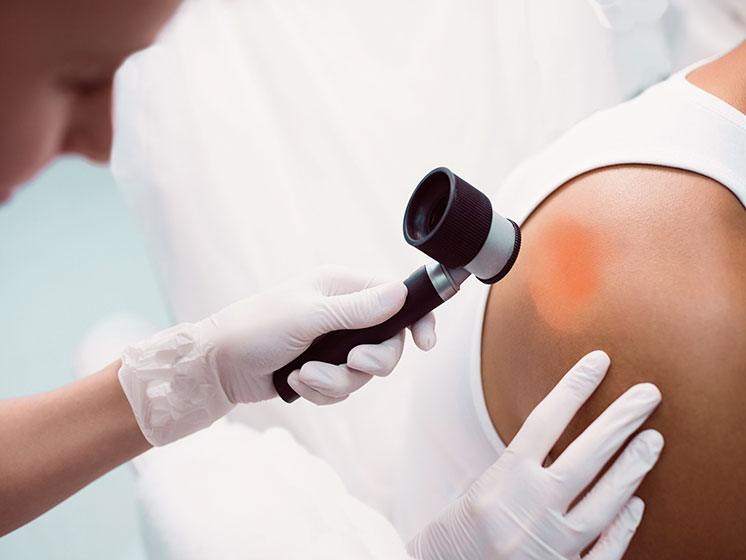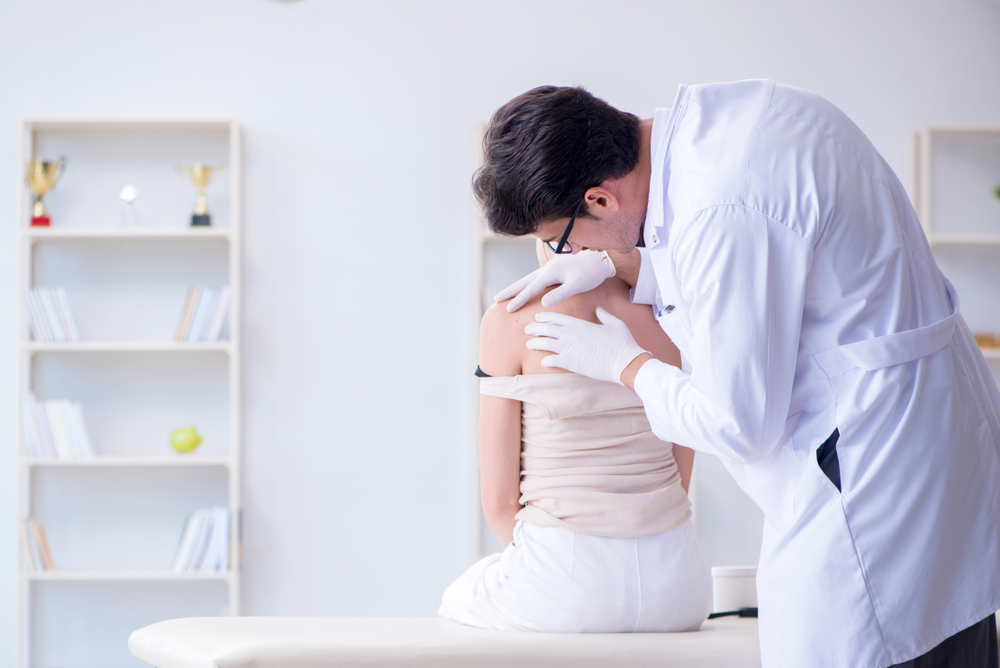Extensive Dermatology Expertise: Addressing Acne Issues, Mole Worries, and Dermatitis Symptoms
When it concerns skin health and wellness, comprehensive dermatology understanding is vital; it empowers individuals to deal with usual skin issues such as acne, mole irregularities, and eczema with self-confidence. Understanding acne treatments, identifying potential skin cancer indications in moles, and handling dermatitis triggers can significantly improve skin health and wellness - skin cancer check. This article will explore these topics, supplying an informative check out the science behind these typical skin worries - an expedition that promises to inform and notify
Recognizing the Fundamentals: What Is Acne, Moles, and Eczema?
While many individuals might recognize with the terms acne, moles, and eczema, recognizing what they in fact are is a various issue entirely. Acne is a skin disease characterized by irritated or infected oil glands, often noticeable as acnes or areas, mostly on the face, back, and breast. Moles, on the other hand, are small skin growths triggered by collections of pigmented cells; they can appear anywhere on the body and differ in shade and size. Lastly, eczema, additionally called atopic dermatitis, is a persistent condition causing inflamed, scratchy skin, usually taking place in action to irritants or allergens. While these problems are common, they can have differing levels of seriousness and influence on an individual's life.
The Scientific research Behind Acne: Causes, Types, and Treatments
The complicated scientific research behind acne begins with comprehending its development system. This intricate process, influenced by different factors, causes different kinds of acne. The article will likewise discuss efficient treatments readily available to take care of and treat this common skin problem.
Acne Development Mechanism
An overwhelming bulk of people will experience the typical skin problem referred to as acne at some time in their lives. Acne formation begins with the overproduction of sebum, an oily substance produced by sebaceous glands in the skin. This excess sebum, along with dead skin cells, obstructs the skin's pores. When these clogged pores come to be contaminated with Propionibacterium acnes, a microorganism normally present on the skin, swelling occurs, causing visible acne. There are different kinds of acne, consisting of blackheads and whiteheads (non-inflammatory), and papules, pustules, nodules, and cysts (inflammatory) Hormonal changes, especially throughout the age of puberty or menstruation, can exacerbate acne by setting off raised sebum production. Recognizing this mechanism is important for creating effective therapies, a subject to be gone over later on. dermatologist near me.

Reliable Acne Therapies
Almost everyone will certainly grapple with acne at some point, making a clear understanding of effective acne treatments important. Numerous therapies target different aspects of acne, such as inflammation, oil production, and germs. It's crucial to bear in mind that not all therapies will work for everyone, as acne's causes and intensity differ.
Mole Issues: Recognition, Examination, and When to Look For Medical Attention
Moles, typical skin growths, require cautious recognition and normal examination for optimal skin health and wellness (eczema specialist). Acknowledging the typical look of one's moles, in addition to any kind of adjustments that might take place, is essential. Motivate clinical interest needs to be looked for when particular indicators, which will certainly be gone over, are discovered
Comprehending Mole Identification
How does one distinguish in between a harmless mole and one that may need clinical interest? First, comprehending the characteristics of regular moles is critical. A normal mole is normally round or oblong, has a smooth side, and is no larger than 6mm in size. The color should be constant and can vary from pink, tan, brownish, or black. Moles normally appear throughout youth or teenage years, and by their adult years, the majority of people have in between 10 to 40 moles. Moles that alter in dimension, shape, or shade, become scratchy or hemorrhage, or appear after age 30 can be startling. These irregularities don't instantly indicate skin cancer cells but are reasons to consult a skin doctor. Understanding mole recognition is the first step in skin wellness management.
Executing Regular Mole Evaluations

Identifying Essential Medical Signs
When should one look for medical interest worrying moles? It is vital to get in touch with a skin doctor when irregular features are discovered. These might consist of asymmetry, irregular borders, differing shades, a size larger than 6mm, or developing dimension, form, or shade. Called the ABCDE's of mole assessment, these modifications might indicate malignant melanoma, a lethal kind of skin cancer cells. Additionally, any bleeding, itching, or non-healing sores associated with moles require instant clinical interest. A person needs to additionally beware if new moles appear after the age of 30 or if there's a sudden increase in the number of moles. Regular self-examinations coupled with expert analyses ensure early discovery and effective treatment of potential skin irregularities.
Dermatitis Explained: Reasons, Signs And Symptoms, and Taking Care Of Flare-Ups
Although dermatitis might look like a basic skin inflammation to the inexperienced eye, it is, actually, a complex dermatological problem with a wide variety of prospective causes. Dermatitis, likewise referred to as atopic dermatitis, is usually brought on by a mix of genetic content and environmental variables. Signs and symptoms can vary from moderate dryness and irritation to serious rashes and swelling. Triggers might differ between individuals, yet usual ones consist of allergens, toxic irritants, and tension. Managing dermatitis normally includes determining and staying clear of triggers, right here preserving a good skin care regimen, and utilizing recommended treatments. Nonetheless, because of the chronic nature of dermatitis, flare-ups may still take place despite having careful administration. The trick is to deal with these flare-ups promptly to avoid aggravating signs.
Practical Skin Care Tips to avoid and Take Care Of Acne, Moles, and Dermatitis
Understanding and resolving skin problems such as acne, moles, and eczema call for sensible and effective skin treatment practices. A balanced diet regimen rich in anti-oxidants can improve skin health and reduced inflammation, possibly decreasing acne and eczema intensity. Regular skin checks aid in early mole discovery, potentially protecting against skin cancer.
Professional Dermatology Treatments: An Introduction of Modern Solutions
Skin specialists today have a vast range of reliable treatment choices to deal with numerous skin problems. With moles, professional removal is done if they posture a health danger. All these therapies are under the expert support and treatment of skin doctors, making sure secure and effective administration of skin problems.
Verdict
Understanding dermatological issues like acne, mole irregularities, and eczema is crucial for reliable therapy. Acne management requires knowledge of different treatment choices, while mole assessment can cause very early discovery of skin cancers cells. Dermatitis administration includes identifying triggers and carrying out suitable therapies. Consequently, extensive dermatology expertise is essential for avoiding and handling these skin problems, highlighting the need for specialist skin doctor websites care to boost skin wellness.